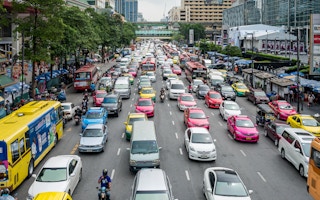Developing an energy architecture that delivers secure, affordable and environmentally sustainable energy supply is a challenging undertaking wrought with complex trade-offs, according to a new report released by the World Economic Forum in collaboration with Accenture on December 11.
The 104-page document, called “The Global Energy Architecture Performance Index Report 2014”, assesses the economic growth, environmental sustainability and energy security of 124 countries to determine effective energy systems for a sustainable future.
Thailand came in highest among the Asean countries at the 55th landing spot, with Singapore, Indonesia, and the Philippines next at 62 to 64, respectively.
These Southeast Asian countries were not able to grab any of the higher ranks since they mainly relied on fossil fuels for most of their energy systems. In fact, Singapore, Brunei Darussalam and Malaysia acquire less than 10 per cent of their total primary energy supply from renewable energy sources, including nuclear, said the report. This energy mix will be stretched to its limits as demand for energy continues to rise in the region.
According to the report, the Asean integration by 2015 is seen as a big factor that will address this challenge. Part of the integration includes a plan for an Asean Power Grid and the development of the Trans-Asean Gas Pipeline, which will be a boost to the energy security in the region, the report highlighted.
“
Southeast Asian countries conversely rely on fossil fuels for most of their energy systems. Singapore, Brunei Darussalam and Malaysia acquire less than 10 per cent of their total primary energy supply from renewable energy sources, including nuclear
However, to truly achieve a balanced energy system, the solution lies in eradicating fossil fuel dependence, such as the subsidies in Brunei and Malaysia and the use of solid fuels for cooking by over half of the population in Cambodia, Indonesia, the Philippines and Vietnam, noted the Index.
It explained that subsidies result in reduced incentives for renewable energy investments and other energy efficient technologies. It also leads to the inefficient use of energy.
In 2012, subsidies in the ASEAN were about US$51 billion, based on the estimates of the International Energy Agency (IEA).
As such, the phase-out of fossil fuels is getting more traction. “In June 2013, Indonesia continued its subsidy reform process by increasing gasoline and diesel prices,” the report cited.
Brunei, Malaysia, Myanmar, Thailand and Vietnam are also enforcing policies that will better align domestic fuel and energy prices to the global markets.
Still, aside from lessening fossil fuel reliance, another challenge the Energy Architecture report specifically paid attention to is increased vehicle ownership, as part of the rapid urbanisation trend happening in the region.
This necessitates even higher energy demand, stressed the report, straining the already problematic and poor energy supply infrastructure. It also contributes to city congestion and urban pollution, due to inefficient combustion of fossil fuels.
Technology and policy solutions are needed to mitigate these challenges, emphasised the comprehensive document. It outlined four: smart grids, maximising economies of scale, smart traffic control, and collecting big data.
In maximising economies of scale, the report noted how “urban environments can offer energy-saving opportunities enabled by the higher population density and economies of scale”. One example is to enhance public transport to replace energy wasteful personal vehicles.
And with smart traffic control, data from in-vehicle telematics or road sensors can assist city government agencies to understand and manage the traffic flow in real time, enabling ways to reduce emissions and fuel consumption by redirecting traffic through less congested roads.
These solutions allow urban centres to better their environmental and energy performance “by adopting efficiency measures and emissions standards and by leveraging opportunities for economies of scale in sectors like public transportation,” the report noted.
The right policies will also help especially with phasing out fossil fuel subsidies, it added.
Arthur Hanna, managing director, energy industry, of Accenture, stressed, however, that “there is no single way forward”.
“Each country must work with its own resources and constraints, making difficult choices and trade-offs,” he added.
For example, both China and India, considered under the BRICS group of countries (Brazil, Russia, India, China and South Africa), landed even lower in the list.
“Resource wealth or economic development alone do not guarantee high performance on the Index,” said Roberto Bocca, WEF senior director, head of energy industries.
“For an effective energy system, countries need to focus on all three sides of the energy triangle – environmental sustainability, security of supply and affordability,” he explained.
The countries that were able to manage this balance placed tops on the list, such as Norway, which came in first, followed by New Zealand – the only country from the Asia Pacific in the top ten – and France. Sweden came in fourth, along with Switzerland, Denmark, Colombia, Spain, Costa Rica and Latvia rounding out the highest performers.
These ten countries depend on low-carbon energy sources for 41 per cent of their energy supply, compared to the global average of 28 per cent, the report noted.

















